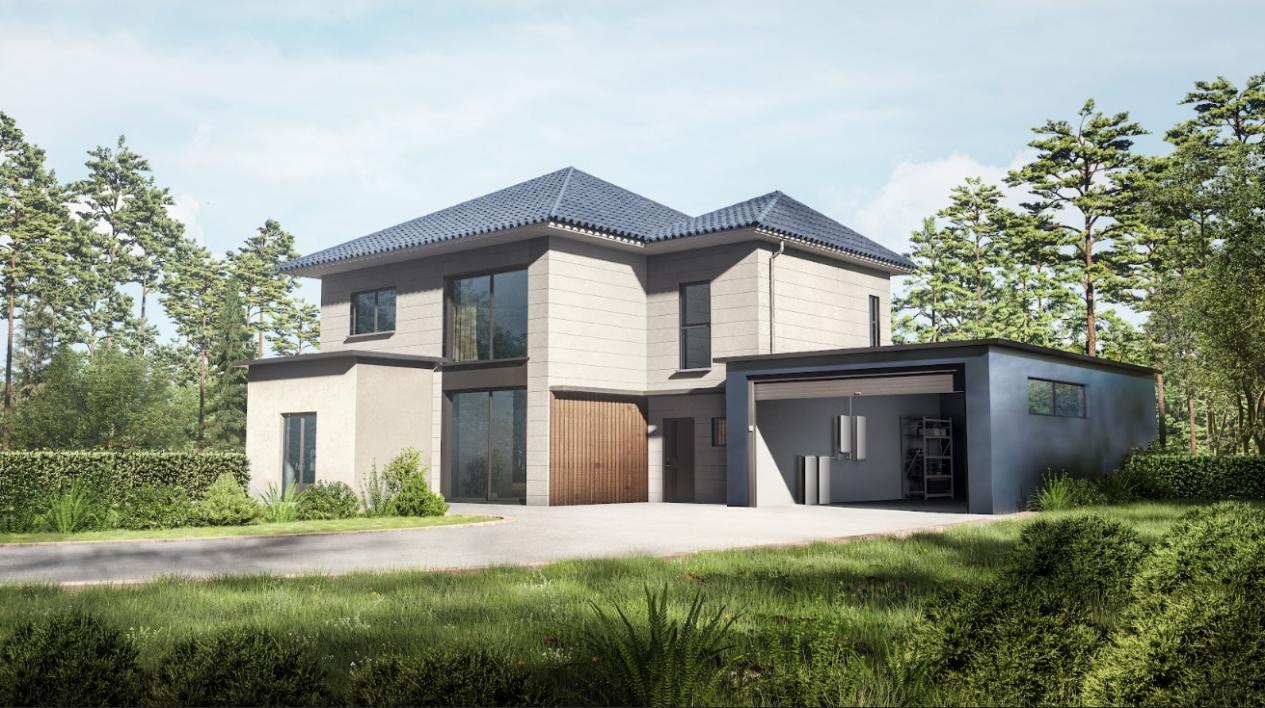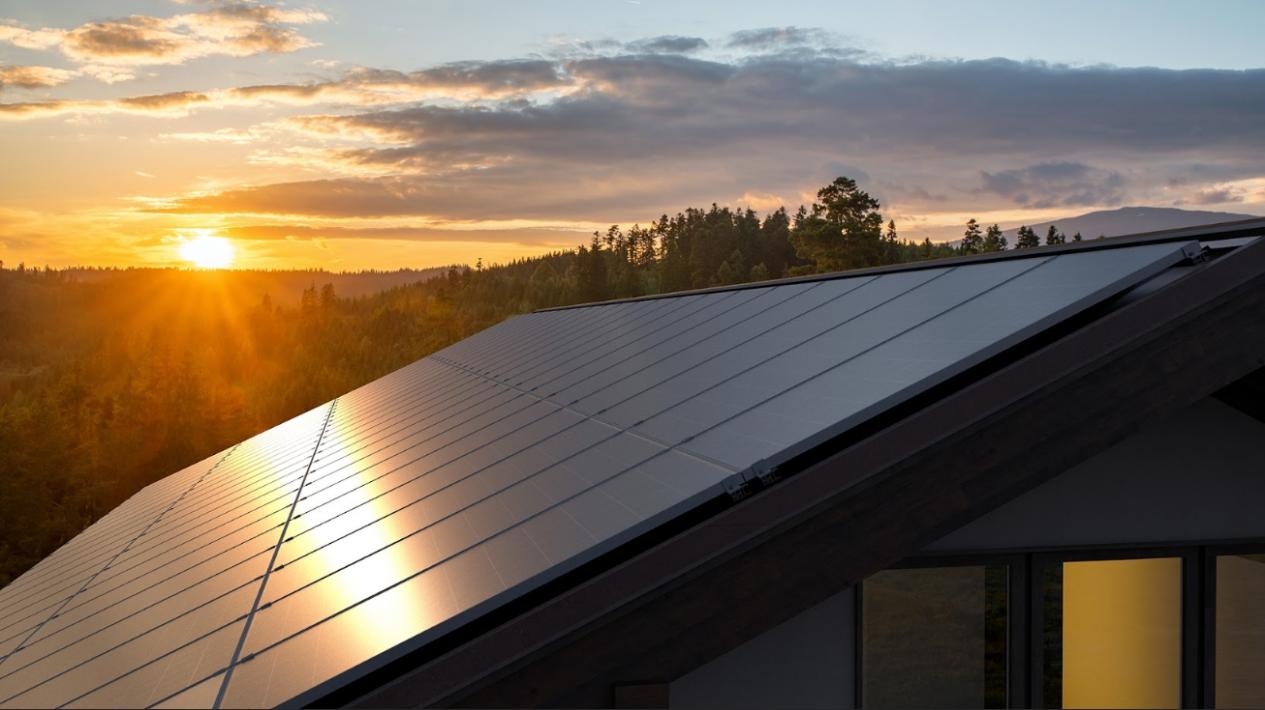Solar and Wind Power: Guide to Solar and Wind Hybrid Systems for Home
- The Hybrid Concept: How Solar and Wind Power Work Together
- Key Components of a Wind Solar Hybrid System
- Weighing the Options: Pros and Cons of a Solar and Wind Hybrid System
- Is a Hybrid System Right for You? Ideal Application Scenarios
- The Urban Reality: Why Rooftop Solar is Often More Practical
- The Unsung Hero: The Importance of Battery Storage
- The Key to Reliable Power: Smart Control
While solar panels are common, a newer idea is getting popular: mixing solar and wind power. This mixed system promises to fix the problems of using just one power source by making wind and solar power energy day and night, rain or shine. This guide will explain how a solar and wind hybrid system works, its good and bad points, and if one is right for your home.
The Hybrid Concept: How Solar and Wind Power Work Together
The basic idea behind a solar and wind hybrid system is simple but powerful: balance. This combination of solar and wind power uses two sources that are not always on, and they often work best at different times. The way they help each other is the main strength of a mixed system, providing more consistent wind and solar power energy.
Solar panels make electricity when the sun is shining. They make the most power during sunny parts of the day. When the sun goes down or it gets very cloudy, they stop making power.
Wind turbines, on the other hand, can make power at any time, day or night, as long as there is enough wind. Winds are often stronger at night and during stormy weather when solar power is low. By using these two sources together, you get a steadier and dependable flow of wind and solar electricity. This fills in the gaps when a single power source would stop working.
Key Components of a Wind Solar Hybrid System
In order to effectively use and manage power generated from two sources, a wind-solar hybrid system requires some major constituents that work harmoniously together. Understanding what each constituent is capable of is required to grasp how the overall system functions.
Power Generators (The Sources)
This is the part of a system that is seen. It consists of solar panels that convert sunlight to DC power through a special technique and a wind turbine. A residential wind turbine consists of blades that capture wind. This makes part of it spin, which is connected to a generator to give DC power.
The Hybrid Controller (The Brain)
The hybrid charge controller is the core of the system. It is an intelligent device that regulates power from the wind turbine and from the solar panel. It is primarily responsible for controlling the power so that it will not overcharge the batteries and destroy them. It is an intelligent device that determines which power to utilize and which to transmit to the inverter or to the batteries.
Battery Storage (The Reservoir)
Since sun and wind are intermittent, you will need batteries. The batteries are a storage tank. They will keep excess wind and solar energy that you have when you are producing more than your house is currently consuming. You will be able to use this stored energy to light your house when it is evening or when it is not sunny or windy.


The Inverter (The Translator)
The final significant component is the inverter. Your panel and turbine generated DC power that is stored in your batteries. However, all of your household devices require AC power. It is up to the inverter to make DC power from your batteries into AC power that is usable by your house. This AC power is the ultimate form of your wind and solar energies.
Weighing the Options: Pros and Cons of a Solar and Wind Hybrid System
While a wind solar hybrid system is more reliable, it also has its own problems. It's important to look at the good and bad points before you decide to buy one.
Advantages (Pros):
More Reliable and Steady Power: By using two sources that help each other, the system has less downtime. The reliability of solar and wind power is its biggest strength.
Longer Power Generation Periods: The system can make power for more hours of the day. The ability to produce wind and solar power energy around the clock is a significant advantage.
Less Wear on Batteries: With a steadier flow of charging from two sources, the batteries may not have to drain as deeply as often. This can put less stress on them and help them last longer.
Disadvantages (Cons):
- High Upfront Cost: This is the biggest problem. You are basically buying and installing two different power systems. The cost is much higher than a solar-only or wind-only system.
- Hard to Install and Place: A mixed system needs special skills to set up. Placing and installing a wind turbine is much harder than installing solar panels. It needs to be high up and away from things that block the wind.
- More Upkeep Needed: A wind turbine has moving parts that need regular checks and upkeep. This is extra work on top of keeping your solar panels clean.
Is a Hybrid System Right for You? Ideal Application Scenarios
Because it costs a lot and is hard to set up, a wind solar hybrid system is not right for every home. Its benefits are biggest in certain situations where having reliable power is the most important thing.
The best use is for off-grid homes, remote cabins, or country homes that can't connect to the public power grid. In these cases, the cost of running power lines can be huge, so making a system that makes its own power is a better choice. For these homeowners, the extra reliability of a solar and wind hybrid system ensures they have a steady supply of wind and solar electricity even during long periods of bad weather.
The Urban Reality: Why Rooftop Solar is Often More Practical
For most suburban or city homeowners, a wind turbine is a poor option. Suburbs and cities have a lot of obstructions like trees and buildings, which deflect and make the wind uneven. An individual house roof-mounted turbine in such a location will experience frequent irregular or stopped-up wind and will have a hard time receiving steady good wind to create a lot of output.
In such locations, a solar panel system connected to the grid on a rooftop is a superior and efficient investment of your finances. You have sunlight on your roof for most of the day. Moreover, a solar system is silent, has no moving parts, and needs minimal maintenance. This is an area where a cutting-edge all-in-one solution is a good fit. By integrating rooftop solar with a smart controller such as the EcoFlow OCEAN Smart Electrical Panel 40, you invest in your house's power and backup needs judiciously.


The Unsung Hero: The Importance of Battery Storage
It doesn't matter that you choose a solar-only system or a solar and wind hybrid system; it is all about the battery that actually contributes to power security. You can only operate your house when the sun is out or the wind is blowing. You are still completely dependent on the grid at the rest of the time.
A home battery allows you to bank excess energy that you create during the day. You can use this banked, clean energy to light your home at night so that you're less dependent upon the utility company. First and foremost, if you do lose power, your battery is a quiet, automatic supplemental power source. Your critical appliances run and your family is protected.
The Key to Reliable Power: Smart Control
The mix of solar and wind power is a very reliable choice for people with the right kind of property, but a complete wind solar hybrid system costs a lot and is hard to set up. For most homeowners, a grid-tied solar system with battery storage is the easier way to have reliable power. The key to having reliable power in any system is smart control and good battery storage. Ultimately, controlling your home's power is key. A system managed by the EcoFlow OCEAN Smart Electrical Panel 40 delivers the smart backup and energy independence your family deserves.